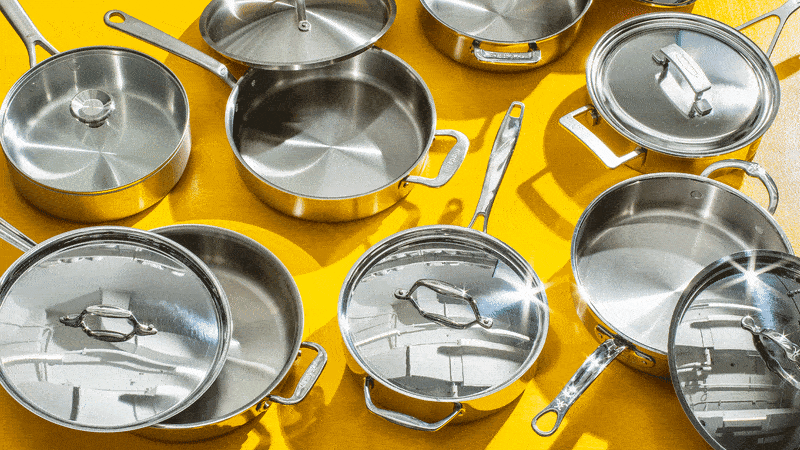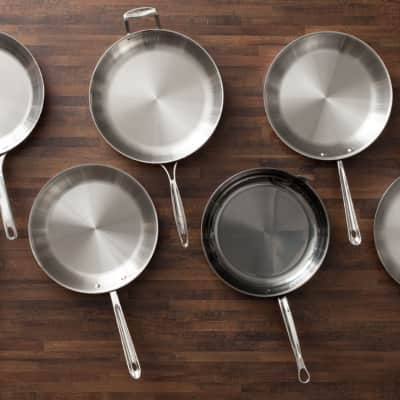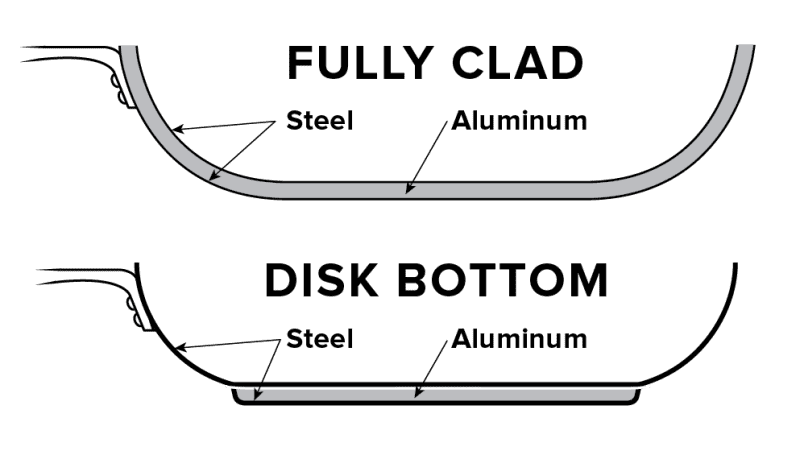The terminology used for this style of cookware can be confusing. We’ve taken to calling them “disk-bottom” pans because it’s literally a disk of metal attached to the bottom of the pan. Some companies market it as having an “aluminum-encapsulated base.” Others describe it as a “tri-ply bottom” or even “a fully clad base.” In all cases, it means that the aluminum and additional layer of stainless steel exist only on the flat bottom of the pan.
In general—particularly for skillets and saucepans—avoid cookware made this way. The thick bottoms tend to heat up very slowly and then retain too much heat, so all of a sudden the pan goes from too cold to too hot.
Because the walls have just one layer of stainless steel (as opposed to fully clad pans), food at the edges is prone to scorching. Bad cooking results are even more likely when the thick base is smaller in diameter than the body of the pan.
As a general rule, these pans aren’t very durable. In our tests, we’ve seen an encapsulated base detach completely and fall off from the body of the pan.



